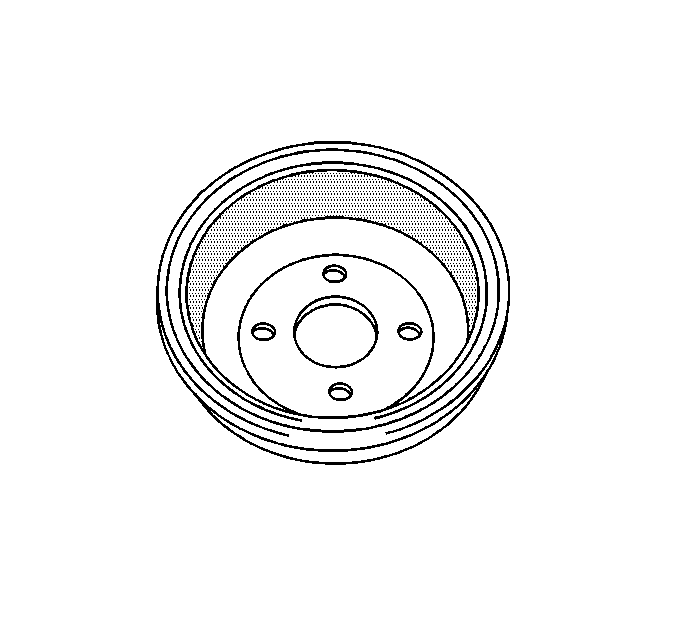Cracked Drum
A cracked drum is unsafe for further service. Never attempt to weld a cracked drum. Replace a cracked drum. Refer to Brake Drum Replacement .
Scored or Grooved Drum
Smooth any light scores. Heavy or excessive scoring will cause excessive brake lining wear. Refinish a scored or grooved drum's braking surface. If refinishing will not remove the scores or grooves, replace the drum. Refer to Brake Drum Replacement .
Out-of-Round or Tapered Drum
Refinish a drum that is out-of-round or tapered. If refinishing will not correct a severe out-of-round or taper condition, replace the drum. Refer to Brake Drum Replacement .
Brake Drum Refinishing

If you refinish a drum, remove only enough metal in order to obtain a true, smooth braking surface. Replace the drum if a drum does not clean up to less than the maximum inside diameter of 201 mm (7.913 in).
The removal of more metal will affect heat dissipation and may cause drum distortion.
When refinishing the drums, always use sharp cutting tools or bits. Dull or worn tools leave a poor surface finish that will affect braking performance. Always use vibration dampening attachments when refinishing the braking surfaces. The attachments eliminate tool chatter and will result in a better surface finish.
The optimum spindle speed for refinishing braking surfaces is spindle 200 rpm. The crossfeed for rough cutting ranges from 0.25 to 0.15 mm (0.010 to 0.006 in) per revolution. Make the finish cuts at the crossfeeds no greater than 0.05 mm (0.002 in) per revolution.
After refinishing the drum, replace any drum that does not clean up to less than the maximum inside diameter of 201 mm (7.913 in).
Brake Drum Balance
During manufacture, weights are used to balance the brake drums. Do not remove these weights. You may inspect the drums for balance on most off-vehicle balancers. Replace the drums that are out of balance.
